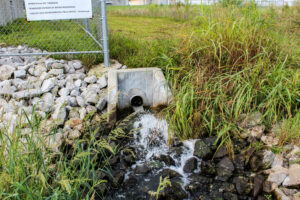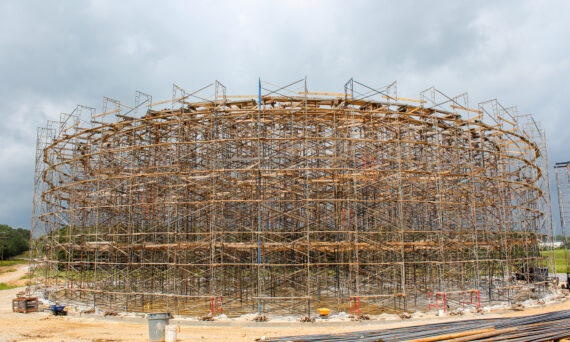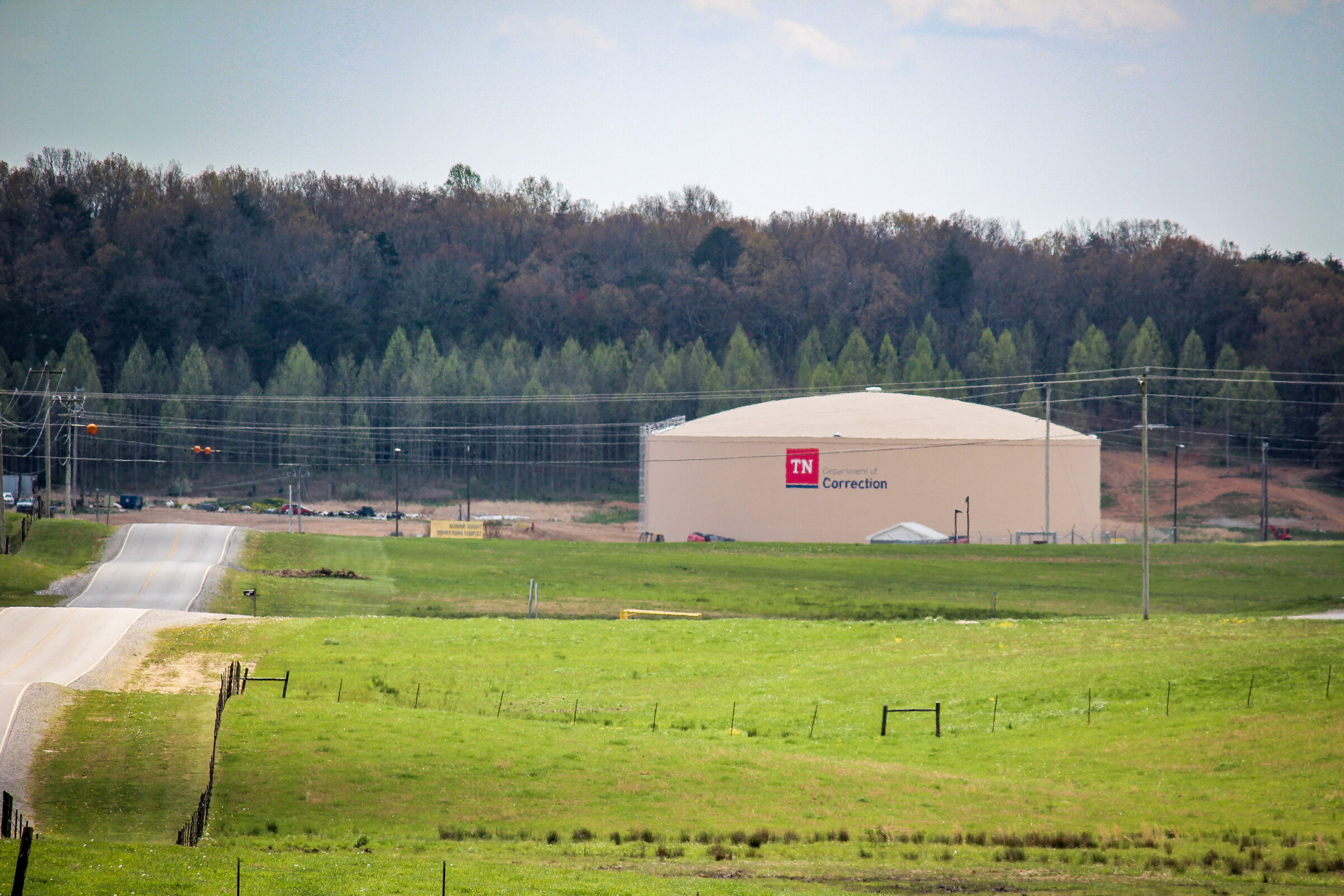Click here for printable PDF
Remote Prison Locked Up Against Environmental Regulations
Not in My Backyard (NIMBY) refers to the common conception that residents have negative attitudes toward human service facilities, like prisons, occupying space in their communities. So, more often than not, these facilities are located in remote areas removed from nearby towns or cities.
Under these circumstances, to accommodate the inmates, staff and guests at these facilities, they must operate their own water and wastewater treatment plants functioning under the same strict environmental guidelines as municipal plants.
The Bledsoe County Correctional Complex (BCCX) is a Tennessee Department of Correction Facility located in a remote area in Southeast Tennessee, serving around 3,000 people between inmates and staff. The wastewater plant is currently designed for 315,000 GPD and is undersized given current flows.
Based on current flows, the plant could be upsized by 50%, however, with plans to expand the facility, it is recommended that the plant double its capacity to accommodate present and future flow projections.
In Bledsoe’s remote location, facilitating a project like this is easier said than done. However, The State of Tennessee Department of General Services on behalf of the Department of Correction retained CTI to help them tackle the challenge.
 The current BCCX wastewater plant discharges into Mill Creek, a small stream that contributes to Glade Creek and eventually Bee Creek, both of which are designated Exceptional Tennessee Water sources. The Tennessee Department of Environment and Conservation (TDEC) has established stringent limits on the effluent from the BCCX plant to limit potential degradation of Mill Creek and preserve the exceptional water sources.
The current BCCX wastewater plant discharges into Mill Creek, a small stream that contributes to Glade Creek and eventually Bee Creek, both of which are designated Exceptional Tennessee Water sources. The Tennessee Department of Environment and Conservation (TDEC) has established stringent limits on the effluent from the BCCX plant to limit potential degradation of Mill Creek and preserve the exceptional water sources.
To limit the environmental pollutant loading to the stream, the 315,000 gpd plant is limited to 7.5 lbs/day Total Nitrogen and 1.5 lbs/ day Phosphorous. These limits are stringent at the current capacity and the permit limits cannot be increased for either concentration or load.
This means that the limitations on the environment cannot handle any expansion for the facility.
In order to double plant capacity, BCCX had to look for alternate disposal options for one half of the proposed capacity. However, there is no suitable stream nearby and, due to its remote location, there is no nearby municipal system to accept the additional flows. The only remaining option to ensure all environmental considerations are met is to land-apply half of the treated capacity using a spray irrigation system.
To successfully treat Nitrogen and Phosphorus, the plant must be sized correctly to perform to its design capacity. There also must be adequate detention time for denitrification to occur.
The second design challenge for this plant upgrade project came from the nature of the water use in a prison facility and its effect on nutrient removal in the plant. Flow patterns at the wastewater plant indicate that 85% of the daily flow occurs throughout the day and early evening, with very low flows occurring at night.
When the current system detects the higher influent flows in the morning, it automatically switches to a maintenance mode which reduces the process cycle time by 50%. This feature does not allow for adequate detention time for nutrient removal to occur.
The proposed plant improvements offer a unique solution to the environmental and operational problems at the BCCX WWTP.
The existing wastewater treatment plant is being expanded to double its current design capacity to 630,000 gpd with 850,000 gpd peak flow by duplicating the current process components. To regulate the drastic diurnal fluctuations, a 280,000-gallon influent and a 62,000-gallon effluent EQ basin will be constructed to allow the plant more consistent, steady-state operation. With an upgraded design capacity, in addition to consistent flow through the plant, the plant should be able to meet all nutrient removal requirements from TDEC.
 All the effluent from the plant will meet nutrient limits, but half of the daily flow will be discharged to Mill Creek and the other half will be land-applied using a spray irrigation system.
All the effluent from the plant will meet nutrient limits, but half of the daily flow will be discharged to Mill Creek and the other half will be land-applied using a spray irrigation system.
The first of the two tanks is currently under construction and the second tank will be completed when the anticipated facility expansion project is underway.
Total construction cost for this project is $15.5 million.

